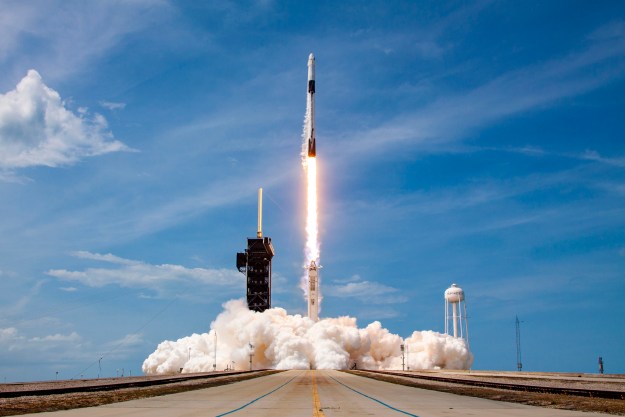In just a few months, NASA will launch its newest rover, Perseverance, on its journey to Mars. The rover will search for evidence of ancient life on the planet, including the collection of martian rock and soil samples. And if you’ve ever wondered how a robot would go about collecting a sample from another planet, NASA has shared more information about how the process works.
Comparing the Perseverance mission to Mars to the Apollo mission to the moon, Adam Steltzner, chief engineer for the Mars 2020 Perseverance rover mission at NASA’s Jet Propulsion Laboratory, pointed out the importance of humans in traditional sample collection: “While you cannot help but marvel at what was achieved back in the days of Apollo, they did have one thing going for them we don’t: Boots on the ground,” he said in a statement. “For us to collect the first samples of Mars for return to Earth, in place of two astronauts we have three robots that have to work with the precision of a Swiss watch.”
To achieve this, the rover will use its Sample Caching System. The system includes a rotating array of drill bits to allow the rover to dig into different sorts of rock and soil, plus abrasion bits to remove the top layer of a rock and also the rover’s spectrometry instruments to analyze samples.
“Essentially, after our rotary percussive drill takes a core sample, it will turn around and dock with one of the four docking cones of the bit carousel,” Steltzner explained. “Then the bit carousel rotates that Mars-filled drill bit and a sample tube down inside the rover to a location where our sample handling arm can grab it. That arm pulls the filled sample tube out of the drill bit and takes it to be imaged by a camera inside the Sample Caching System.”

In total, the Sample Caching System has an incredible 3,000 parts, all of which must work in unison to drill, handle, and store samples of the martian rock and soil.
“It sounds like a lot, but you begin to realize the need for complexity when you consider the Sample Caching System is tasked with autonomously drilling into Mars rock, pulling out intact core samples and then sealing them hermetically in hyper-sterile vessels that are essentially free of any Earth-originating organic material that could get in the way of future analysis,” Steltzner said. “In terms of technology, it is the most complicated, most sophisticated mechanism that we have ever built, tested, and readied for spaceflight.”
Once a sample has been collected and imaged, it is sealed up in its tube and returned to storage inside the rover. This process is complex enough, but actually getting the samples back to Earth is a whole new challenge. The current plan involves sending two spacecraft to Mars — one to land on the planet and rendezvous with the rover to collect the samples, then ascend into orbit. The second craft would rendezvous with this first craft and carry the samples back to Earth.
NASA hopes to land the first sample return craft in 2028, and return the samples to Earth by 2031.
Editors' Recommendations
- NASA needs a new approach for its challenging Mars Sample Return mission
- NASA has collected a whopping 121 grams of sample from asteroid Bennu
- NASA’s wild plan to launch a rocket from Mars is ‘like something from an amusement park’
- How one NASA lander decoded secrets lying beneath the surface of Mars
- Perseverance rover catches footage of a dust devil on Mars



